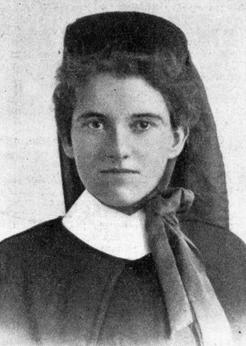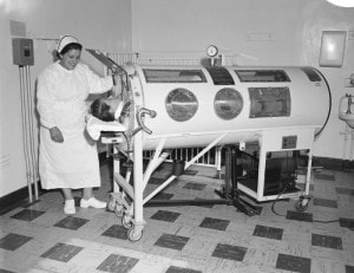|
This week, welcome Author Susan Latta with the story of one trailblazing nurse featured in her new book Bold Women of Medicine: 21 Stories of Astounding Discoveries, Daring Surgeries, and Healing Breakthroughs.  Nurse Elizabeth Kenny, circa 1915, courtesy Wikipedia commons Nurse Elizabeth Kenny, circa 1915, courtesy Wikipedia commons Thank you, Susan! No one knows whether Elizabeth Kenny had any formal medical training or learned on-the-job, but that didn’t stop her. She had a red cape and nurse’s jumper made and traveled through Australia’s wild bush land to serve anyone who needed help. Born in Australia in 1880, at a time when girls were not to be brassy, stubborn, or opinionated. Elizabeth had no intention of following those rules. I first heard about Elizabeth Kenny when my father had a stroke and was transferred to the Elizabeth Kenny Institute in Minneapolis for recovery. Prior to that, I knew of her in name only.  Author Susan Latta Author Susan Latta I remember standing in a long line in the school gym waiting to receive my vaccination in the early 1960s, and had no idea how many people suffered after being stricken by polio. Decades earlier Elizabeth Kenny had become famous for her treatment for polio, a dreadful virus that caused paralysis and death. Below: Elisabeth Kenny demonstrating polio treatment to doctors and nurses at the Elizabeth Kenny Institute in Minneapolis, Minnesota, 1943. Library of Congress photo  Elizabeth didn’t know it at the time but discovered her polio treatment one day in 1911. A frantic farmer called for help for his two-year-old daughter. Amy's arms and legs were twisted tight with unbearable pain. Elizabeth Kenny galloped away to send a telegram to her trusted doctor, Aeneas McDonnell. When he replied that it was polio, he said there was nothing to be done, and to do “the best with symptoms presenting themselves.” "I knew the relaxing power of heat," Elizabeth said. "I filled a frying pan with salt, placed it over the fire, then poured it into a bag and applied it to the leg that was giving the most pain. After an anxious wait, I saw no relief followed the application. I then prepared a linseed meal poultice, but the weight of this seemed only to increase the pain. "At last I tore a blanket made from soft Australian wool into suitable strips and wrung them out in boiling water. These I wrapped gently about the poor tortured muscles. The whimpering of the child ceased almost immediately, and after a few more applications her eyes closed slowly and she fell asleep.” Amy recovered. But men in the medical field refused to accept Elizabeth's methods.  In 1914, Elizabeth Kenny traveled to England to serve in WWI. The Australian Army Nursing Service gave her the title of “sister,” which had nothing to do with religion, instead meaning “senior nurse.” She became known as Sister Kenny. After the war, she presented her methods to control the muscle spasms and re-educate the paralyzed limbs to packed rooms of medical men in Australia. Over and over they called her a quack nurse from the bush, and finally she had had enough. She sailed to America to prove her treatment. After being turned away by doctors in New York and Chicago, she landed in Minnesota where a few doctors said her treatment did work.  As word spread she gained nationwide support, even landing on a list of most admired women in America nine years running. The Elizabeth Kenny Institute opened in 1942, and still exists today as Courage Kenny, a facility for stroke and accident victims. At right: A patient is treated in an Iron Lung circa 1960s. Photo courtesy U.S. Centers for Disease Control and Prevention Polio was eradicated in America when Albert Sabin’s live polio virus vaccine guaranteed immunity, just a few short years after Sister Kenny died in 1952. Thank you, Susan! I'm excited to learn about the other ground-breaking medical women featured in your book, Bold Women of Medicine: 21 Stories of Astounding Discoveries, Daring Surgeries, and Healing Breakthroughs. See more about the book and Author Susan Latta here... Comments are closed.
|
I'm fascinated to discover little-known history, stories of people and events that provide a new perspective on why and how things happened, new voices that haven't been heard, insight into how the past brought us here today, and how it might guide us to a better future.
I also post here about my books and feature other authors and their books on compelling and important historical topics. Occasionally, I share what makes me happy, pictures of my garden, recipes I've made, events I've attended, people I've met. I'm always happy to hear from readers in the blog comments, by email or social media. Archives
September 2023
Categories
All
|
